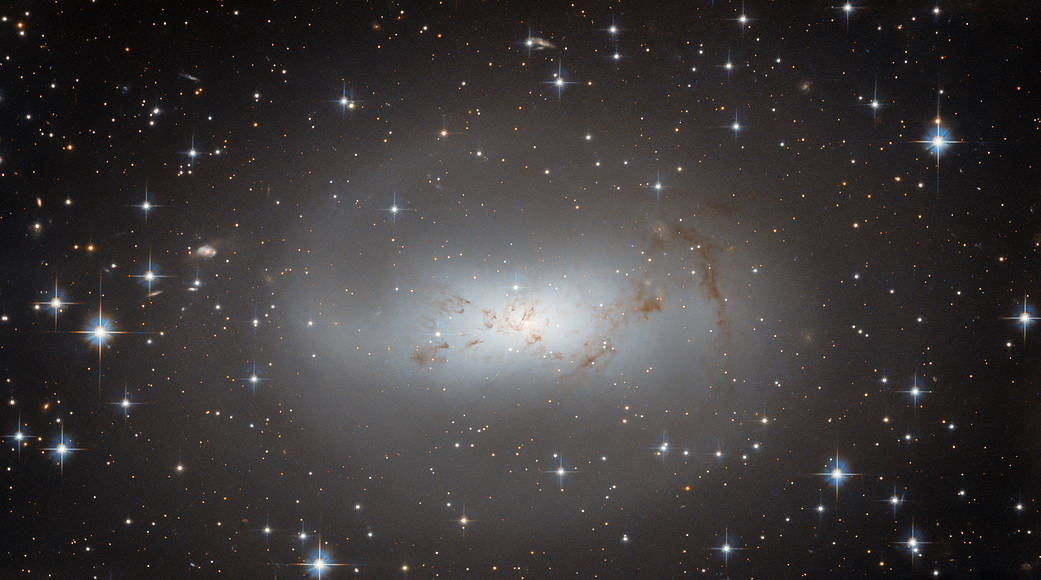哈勃观测到星系邻居
The highly irregular galaxy ESO 174-1, which resembles a lonely, hazy cloud against a backdrop of bright stars, dominates this image from the NASA/ESA Hubble Space Telescope. ESO 174-1 lies around 11 million light-years from Earth and consists of a bright cloud of stars and a faint, meandering tendril of dark gas and dust.
This image is part of a collection of Hubble observations designed to better understand our nearby galactic neighbors. The observations aim to resolve the brightest stars and basic properties of every known galaxy within 10 megaparsecs. A parsec is a unit used by astronomers to measure the vast distances to other galaxies – 10 megaparsecs translates to 32 million light-years – and makes astronomical distances easier to handle. For example, the nearest star to the Sun, Proxima Centauri, is about 1.3 parsecs away. In everyday units this is a staggering 25 trillion miles (40 trillion km)!
The program to capture all of our neighboring galaxies was designed to use the 2-3% of Hubble time available between observations. It’s inefficient for Hubble to make back-to-back observations of objects that are in opposite parts of the sky. Observing programs like the one that captured ESO 174-1 fill the gaps between other observations. This way the telescope can move gradually from one observation to another, while still collecting data. These fill-in observing programs make the most out of every last minute of Hubble’s observing time.
Text credit: European Space Agency (ESA)
Image credit: ESA/Hubble & NASA, R. Tully
高度不规则的星系ESO 174-1,在明亮的恒星背景下,像一个孤独的、朦胧的云,占据了这张由NASA/ESA哈勃太空望远镜拍摄的照片。ESO 174-1距离地球大约1,100万光年,由一团明亮的恒星云和一团暗淡、蜿蜒的黑暗气体和尘埃组成。
这张图片是哈勃望远镜观测集的一部分,旨在更好地了解我们附近的星系邻居。这些观测旨在分辨1,000秒以内的最亮恒星和每个已知星系的基本属性。秒差距是天文学家用来测量到其他星系的巨大距离的单位-1,000万秒相当于3200万光年——这使得天文距离更容易处理。例如,距离太阳最近的恒星,半人马座比邻星,大约1.3秒差距。在日常单位中,这是一个惊人的25万亿英里(40万亿公里)的距离!
观测我们所有邻近星系的计划是为了利用观测间隔的2-3%的哈勃时间所设计。对哈勃来说,背靠背地观察天空中相反部分的物体是低效的。像拍摄ESO 174-1这样的观测项目填补了其他观测之间的空白。这样,望远镜就可以从一个观测点逐渐移动到另一个观测点,同时仍能收集数据。这些补上的观测项目充分利用了哈勃望远镜观测时间的最后一分钟。
文稿来源:European Space Agency (ESA)
影像来源:ESA/Hubble & NASA, R. Tully

